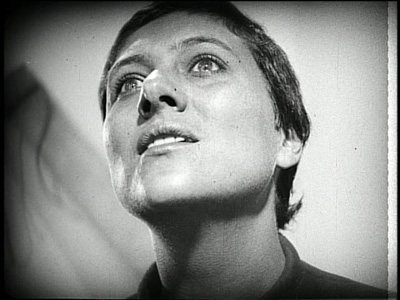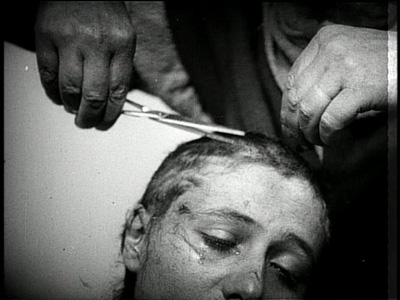Lambcast #793 “Santa Jaws” December MOTM
5 days ago
Reviews, usually short, of every movie I see for the first time. Marks are out of ten. Plus assorted non-review posts on film.
 From Olly Moss's Films in Black and Red series. More minimalist poster designs here and here (last link NSFW in an abstract way).
From Olly Moss's Films in Black and Red series. More minimalist poster designs here and here (last link NSFW in an abstract way).

There is a language of shooting and editing that we subconsciously expect at the movies. We assume that if two people are talking, the cuts will make it seem that they are looking at one another. We assume that if a judge is questioning a defendant, the camera placement and editing will make it clear where they stand in relation to one another. If we see three people in a room, we expect to be able to say how they are arranged and which is closest to the camera. Almost all such visual cues are missing from "The Passion of Joan of Arc." Instead Dreyer cuts the film into a series of startling images.This can hardly be stressed enough: There are no establishing shots. When two people talk to each other, you never get one of those over-the-shoulder shots and you rarely see the two people in the same frame. What instead you get is a highly rhythmic sequence of different, though related pictures, supported by Richard Einhorn's Voices of Light, which must be one of the greatest scores ever written for film.** The effect is hard to describe, and the best (not very good) comparison I can come up with is Battleship Potemkin. Maybe the fact that they don't do it like this anymore has to do with the fact that it's too easy to move the camera. Don't get me wrong: I like a good tracking shot more than the next man, and indeed Dreyer includes some to great effect, but he never moves the camera just because he can.
 Not Natalie Portman
Not Natalie Portman